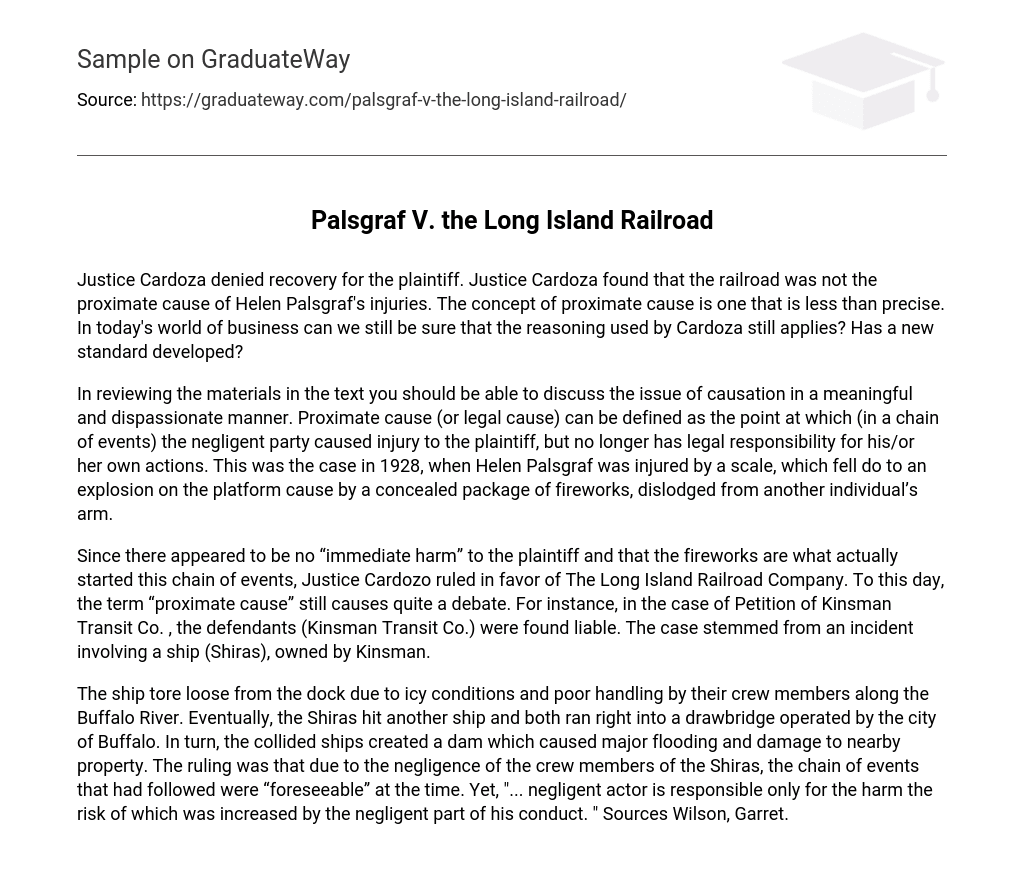Justice Cardoza’s denial of recovery for the plaintiff was based on his finding that the railroad was not the proximate cause of Helen Palsgraf’s injuries. The concept of proximate cause is known for its lack of precision. Given the current business landscape, it is worth questioning whether Cardoza’s reasoning still holds true and if a new standard has emerged.
By reviewing the materials provided, you should be capable of engaging in a thoughtful and impartial discussion concerning the issue of causation. Proximate cause, also known as legal cause, refers to the stage in a series of events where the negligent party inflicts harm upon the plaintiff but is no longer legally accountable for their own actions. A classic illustration of this occurred in 1928 when Helen Palsgraf sustained an injury caused by a falling scale due to an explosion on the platform. This explosion was triggered by a hidden package of fireworks dislodged from someone else’s arm.
Justice Cardozo ruled in favor of The Long Island Railroad Company because the plaintiff did not suffer any immediate harm, and it was the fireworks that started the chain of events. The term “proximate cause” continues to be a topic of debate. In another case, Petition of Kinsman Transit Co., the defendants (Kinsman Transit Co.) were found liable due to an incident involving their ship (Shiras).
The ship became detached from the dock as a result of icy conditions and poor handling by the crew members near the Buffalo River. Eventually, the Shiras collided with another ship and both crashed into a drawbridge operated by the city of Buffalo. Consequently, the collided ships formed a barrier that led to significant flooding and damage to nearby property. The ruling stated that the crew members of the Shiras were negligent, and the subsequent chain of events was considered “foreseeable” at the time. However, according to sources, a negligent individual is only accountable for the harm caused by their negligent behavior that increased the associated risks. Sources: Wilson, Garret.





